Workforce diversity is good business, linked to bottom-line gains ranging from improved innovation to increased market share, smarter decision making and better company performance overall. And with more than three in four job seekers and employees believing that workplace diversity is important, it only makes sense that employers are actively structuring their company perks to engage them.
How do you architect your benefits and policies to attract diverse talent and widen your talent pool? We checked in with Sarah George, a Diversity, Equity and Inclusion Leader with our parent company, Hudson RPO, on best practices to attract and retain a diverse workforce. Read on for insights and tips to help you level up your benefits offerings for diverse candidates.
Defining true diversity
When we say “diverse talent,” many of us think primarily about gender and race, but true diversity extends past that to include different ethnicities, cultural and socioeconomic backgrounds, educational experiences, LGBTQIA+, neurodiversity, disabilities, intersectionality (individuals with multiple identities) and more. Overall, the goal is to create an environment that supports and welcomes all employees equally, so that people can produce their best work.
A sense of belonging
Crafting diversity, equity and inclusion (DEI) policies and benefits may seem challenging at first, but it’s easier with the help and guidance of experts. Above all, people want to feel a genuine sense of belonging and connection to your company — that they’re respected and valued as equal members of a diverse team, compensated with the same perks, considerations and opportunities.
The benefits of inclusive benefits
Compensation and benefits naturally play a critical role in achieving diversity, equity and inclusion. No longer nice-to-haves or performative gestures, inclusive benefits influence candidates’ decisions to pursue a role with your company (or your competitor) and whether or not they will stay on once hired.
It involves creating an environment in which everyone feels valued, respected and empowered to bring their whole selves to work and contribute their best. A company needs to stay relevant and attractive as an employer of choice.
Sarah George, DEI Leader, Hudson RPO
As Sarah points out, inclusive benefits go a long way in establishing equity and fairness. Underrepresented candidates seek out workplaces in which their unique selves are acknowledged.
Consider these stats:
- 76% of job seekers and employees view a diverse workforce as an important factor when evaluating companies and considering job offers (Glassdoor)
- 83% of millennials are actively engaged when they believe their organization fosters an inclusive culture, compared to only 60% who are actively engaged when their organization does not foster an inclusive culture (Deloitte University)
Baseline benefits
More than checking boxes, inclusive benefits are a strategic and intentional investment in creating an equitable workplace. At minimum, Sarah says, companies ideally will offer flexible working, remote/hybrid working, generous paid time off, medical, dental and optical coverage, life insurance and employee assistance program (EAP) benefits to help employees manage personal difficulties or life challenges.
Leveling up your offerings
Beyond these, companies also tend to offer additional perks such as those focused on wellness, caregiving (whether for children, pets or other family members) and feeling supported in your religion, interests, education, professional development and more. Sarah offers some ideas and examples that may spark ideas to expand your own menu of benefits.
- Unlimited paid time off
- Employee assistance programs (EAPs) for legal assistance, mental health support and coaching
- Flexibility and paid time off for family leave, adoption and caring for loved ones including children and pets
- Mentoring and sponsorships, particularly for underrepresented groups
- Employee resource groups (ERGs) or affinity groups formed around shared backgrounds or interests such as race, ethnicity, gender, sexual orientation, parental status or generation
- Floating holidays for religious observances and a prayer room in the office
- Tuition reimbursement for professional development and/or student loan assistance to help manage student debt
- Access to self-paced learning such as LinkedIn Learning
- Opportunities for skills-based volunteerism and/or global volunteering days
- Accessible parking and facilities
- Computer hardware to assist the visually impaired
- Domestic partner insurance coverage (not just for married couples)
- Gender-neutral bathrooms and showers
- Bicycle repairs and discounted bicycle parts (to encourage riding to work) or commuter benefits
- Stipends or discounts for benefits such as gym memberships or auto or pet insurance
Going even further
Beyond these policies and perks, there are other benefits which are not as widely offered today, but which are powerful in attracting and retaining diverse talent. Is your company currently offering any of these — or are you open to exploring them?
- Flexibility and adult day care fee assistance for employees who are caring for their aging parent/s
- Transgender-inclusive health insurance coverage or menopause support
- Providing training in American Sign Language
- Providing language training (discount to join an online platform) to enhance communication
- The ability to bring service/support dogs to work
- Pet bereavement leave
- Compassionate leave for employees who need to travel overseas for a family member’s illness or death
Putting ideas into practice
When structuring your benefits and policies, it’s important to note that it’s about more than mere representation. Part 2 (coming soon) of our blog post contains tips on how to rethink your candidate attraction and interview process. Find out how to surface the insights you need to build inclusive offerings around benefits that your ideal candidates and employees care about most, and of course contact us at [email protected] if you’d like some help.
Newsletter
Blog Categories
Recent Posts

[Tech x Talent Dashboard] It’s time to change DEI metrics and tactics

3 Quick Tips to Improve Your Hiring Process

Beyond the Checkbox: DEI in 2024 and Beyond

The Unexpected Secret to Effective Rapid Response Hiring




